Visiting Australia!
Australia is my home country, and while I love travelling around the world, Australia is a great place to travel, too; in fact, it's one of the best! Australia is amazingly diverse, from the buzz and modernity of Sydney and Melbourne, to the solitude and ancientness of Central Australia, and to the culture and serenity of Tasmania. Which is why Australia is a destination on most travellers' list.
Here you will find my thoughts on visiting Australia, and the things that I've seen and done, which you can do while you're here!
Meeting tree kangaroos

Australia is known for its particular set of strange animals. Strange as kangaroos are, everyone in the world knows about them (medium-large animals that travel around our open grasslands using prodigious hops) so they are not surprising. What many people, even some Australians, don't know about is a group of kangaroos that have reverted to the arboreal habitat of their ancient ancestors - tree kangaroos.
Autumn trees in Orange

We’ve arrived in Central-west New South Wales at the beginning of Autumn. Like much of the temperate and cooler part of Australia there are lots of northern-hemisphere deciduous trees here, and at this time of the year the leaves are starting to change colour and fall. This creates explosions of colour all around the towns' streets. The beautiful trees are promoted as a visitor attraction in many towns, including Orange.
Begonias in Orange

The city of Orange in New South Wales has a lovely formal Victorian-era park, Cook Park.
In 1934 a conservatory was built in the park specifically for showing off begonias. The Blowes Conservatory (named after the mayor of the day, who pushed for its construction) still showcases begonias, so we went along for a look.
Visiting Orange

We’ve recently taken the chance of moving around a bit (just within Australia) by travelling from south-east Queensland to Central-west New South Wales, basing ourselves in the city of Orange. I’ve visited this area a few times in the last few years and have found that it is a place of surprisingly lovely countryside, and functional and community-orientated towns and small cities.
The Archibald Prize in Tweed
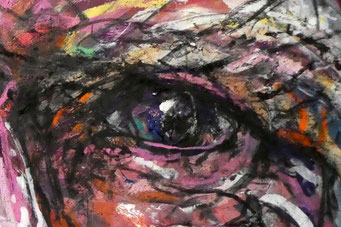
The 2020 Archibald Prize Regional Tour has come to the Tweed Shire in the north-east corner of New South Wales, which is just over the border from where we are on the Gold Coast, Queensland. We’ve crossed paths with the tour a couple of times in the past (Ballarat in 2016, and Orange in 2019) while we’ve been travelling around the country housesitting, and we’ve always enjoyed Australia’s most famous art competition.
Palm Beach debris sculptures

Here on the southern Gold Coast, Queensland, we’ve recently had lots of rain and storms.
This has flushed tonnes of debris out of our local waterway, Currumbin Creek, onto the nearby beach. Most of this debris is wood that ranges in size from small twigs to entire tree trunks. Beach visitors have been having a great time using this as building material for beach sculptures!
A visit to Bribie Island

Bribie Island is a sand-barrier island that runs for over thirty kilometres south from Caloundra, where I’m staying.
The southern end of the island is quite developed, but the northern end near Caloundra is natural and wild, so it’s an attractive place to visit as a contrast with the highly urban development of Caloundra.
Currimundi beach wildlife

I like long walks on beaches, and there’s a long beach that runs north from Moffat Beach on the Caloundra Headland, near to where I’m staying.
Apart from the general beauty of the beach, there’s commonly some interesting and unusual wildlife to be seen here.For this particular walk some small pelagic animals that I rarely, if ever, see had been blown in by the wind.
Mooloolaba

We are staying at the northern end of Alexandra Headland, on the Sunshine Coast in Queensland.
The southern end of Alexandra Headland leads into Mooloolaba Beach and then on to Mooloolaba. Mooloolaba is exclusively a tourist destination, and a popular one. It has numerous restaurants, coffee shops, and tourist trinket shops, with a nicely developed esplanade area.
Staying at Alexandra Headland

We’re on the Sunshine Coast, Queensland, while waiting out the coronavirus restrictions.
Since our initial stay at Kings Beach, Caloundra, we’ve spent the last four months at nearby Alexandra Headland. It’s another nice place to be while we can’t travel.
Kite Surfing at Happy Valley

When the onshore wind picks up Happy Valley at Caloundra become a popular place for kite surfers. Kings beach, where we are staying while we see out the corona virus lockdown, is just around the corner from Happy Valley.
The boardwalk which runs along the shore at Happy Valley is one of our favourite walks, so I usually get to see the kite surfers when they’re in action.
Travelling and the coronavirus
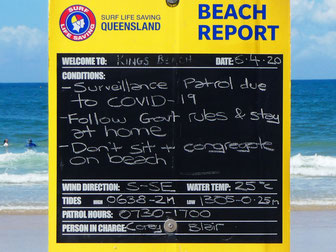
Coronavirus has brought our travelling to a halt!
We have decided to come "home" (whatever that means) to the Sunshine Coast in Queensland until this blows over. We are in Caloundra for a few weeks until we move to a slightly longer-term situation at Alexander Headland, where we will wait to see what happens in the next several months.
Scrounging birds at Tower Hill

Have you ever had sparrows, pigeons, seagulls, or even peafowl scrounging around you and annoying you while you're having a picnic? Here in Australia we have some slightly more disconcerting birds that can take to scrounging for crumbs and scraps. We recently visited Tower Hill (it’s near our Warrnambool housesit) in south-west Victoria for a walk and a picnic, and encountered some scrounging native birds that we don't often see – emus!
Visiting Melbourne
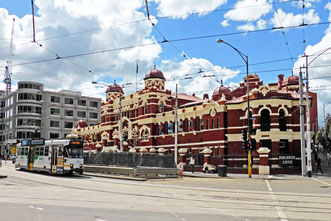
A British friend of mine is coming to Melbourne, Australia, soon, for a conference, and she asked me for suggestions for things that she should see and do while she is here. I put this list of things together for her, plus some general advice on getting around – it’s not definitive, or even the most popular recommendations for Melbourne, but they’re my personal favourites.
The Blue Mountains
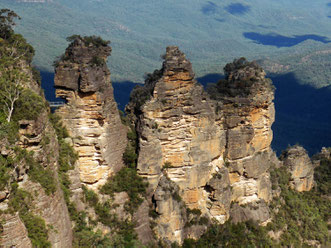
Sydney is surrounded, even enclosed, by a vast area of mountainous wilderness. This wilderness is divided into several national parks, the best known of which is the Blue Mountains.
I've flown over the Blue Mountains many times, usually coming in to or leaving from Sydney. I've always been impressed with this expanse of rugged mountains, bush, steep cliffs, and deep canyons, that’s so close to a big city, and I’ve always harboured the idea of visiting and bushwalking in some of this amazing environment.
A stop-over in Sydney
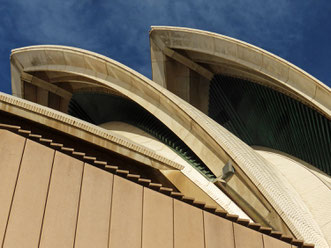
We are currently travelling from Hobart to a house sit that starts in Canberra.
Whenever you fly out of Tasmania to go to Canberra you’re almost always going to fly to either Melbourne or Sydney on the way, so, as we had a few days spare, we decided to stop over in Sydney. I haven't been to Sydney for a few years so it's a nice opportunity to have a look around again; plus, we're coming here later in the year for another house sit, so we'll meet the house owners while we're here.
Walking on a foggy Kunanyi
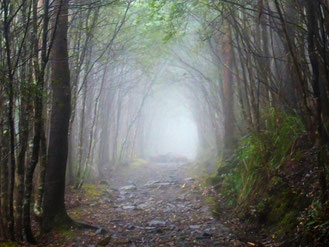
Kunanyi/Mt Wellington is a big part of the soul of Hobart – It’s 1270 metres high, and only eight kilometres from the centre of the city, so it looms over the city, and is visible from just about any part of it.
Our house-sit in Lenah Valley is right under the mountain, so we came up with the idea of travelling to the top (there’s a road right up to the pinnacle) and walking back down through the bush to our house-sit.
School strike for climate action

Last week school students all over the world went on strike to protest the lack of action on climate change. The world's young people are facing life on an Earth that previous generations have severely degraded; the problem is well understood and the effects are so easily observed, there's no excuse for inaction.
While the protest was run by the students, adults were welcome to come along as “supporting adults”, so we went to the protest that was held here in Hobart, Tasmania.
Back in Hobart
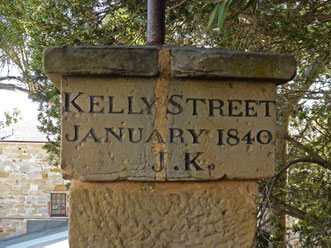
After being away for about six months I am back in Hobart, Tasmania, again for another house-sit, this time in Lenah Valley, in Hobart’s northern suburbs.
We’ve spent our first night in a B and B in Hobart city while waiting for our house-sit to start, so I've had a chance to have a good walk around some of my favourite places in Hobart (I have a lot of favourite places in Hobart): Sullivan’s Cove, Salamanca Place, and Battery Point.
The Penny-farthing championships
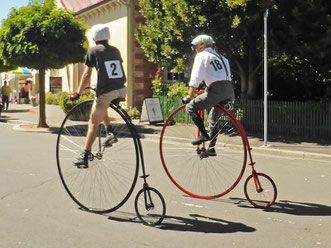
One of the great things about house-sitting is that you are in an area long enough to cross paths with some locally held events. Recently we cross paths with the National Penny-Farthing Championships, which are held in Evandale, Tasmania, not far from our current house-sit.
There are penny farthing races held throughout the day – these bikes are crazy things to watch racing!
A day in Tasmania’s Liffey Valley
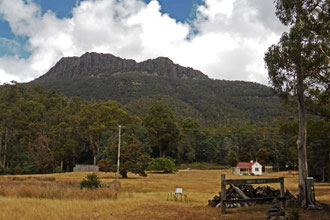
Local markets are one of our favourite ways of interacting with local people as we travel around house-sitting. Yesterday we visited the Liffey Valley Markets in northern Tasmania. To complement our trip to the markets, we had a look to see what else was in the area, and we found that there are some bushland reserves that looked worth a visit.
It turned out to be a great day with lovely experiences and beautiful Tasmanian rural and bush scenery.
Visiting Bridestowe Lavender Estate
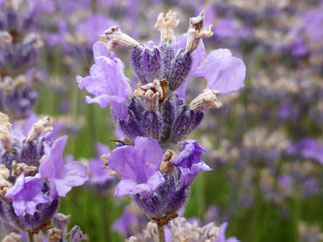
Bridestowe Lavender Estate in the north of Tasmania is one of Tasmania's most popular tourist attractions, attracting visitors from all over Australia and the world. It’s especially popular with Chinese visitors, since visits to the farm by a famous Chinese model and the Chinese president.
We visited recently and thoroughly enjoyed wandering through the rows of lavender!
Rocky Cape National Park

As with most travel destinations, visitors to Tasmania, especially those who are on a tight time budget, head for the well-known attractions such as Cradle Mountain, Freycinet National Park (including Wine Glass Bay), and Maria Island. These are top places on the typical traveller’s ‘must do’ list for good reasons – they are all beautiful places that you actually should see.
Of course, Tasmania has many more beautiful places on offer that are also very much worth visiting – one of my favourites of these is Rocky Cape National Park.
Poppies in Tasmania
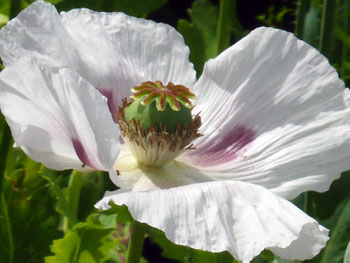
A large part of central northern Tasmania has rich, red, volcanic soil. Much of this beautiful soil is farmland that produces a range of agricultural products including various crops and dairying.
One of the crops commonly grown here is flowers, especially tulips in the spring. Now, in the middle of summer, the flowers that are here are poppies, grown for their opiates.
Hobart street art
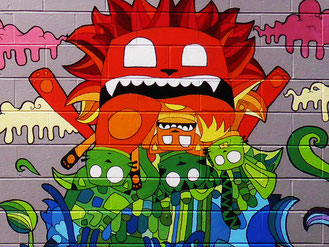
If you have ever done a Walking tour of Melbourne you would probably have visited Hosier Lane to see the street art – graffiti-style murals on the buildings of this little back street.
After walking around Hobart many times over the last couple of years I thought I knew it pretty well, but today I was surprised by a pocket of great street art!
Tulips on Table Cape

Much of the Western half of the north coast of Tasmania has deep red volcanic soil. As you pass through the area you see bright green paddocks with sheep and dairy cattle that are making the best of that soil, and ploughed paddocks that reveal the chocolatey red colour of the soil. This marvellous soil in Tasmania’s temperate climate is perfect for growing flowers.
Flying over the Australian landscape
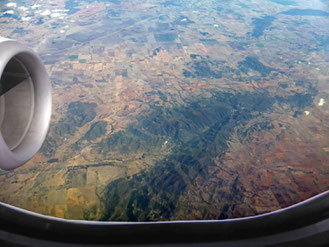
I've been flying back and forth between Launceston and South East Queensland again, and, as before, what I see out of the window as I fly over Australia reveals humanity's vast effect on the landscape.
This flight takes me across an immense fertile plain in the middle of New South Wales and Victoria. Most of this 1500 kilometres of landscape is co-opted to serve humanity – it’s just one big machine for feeding and clothing humans.
Climbing Mount Barrow
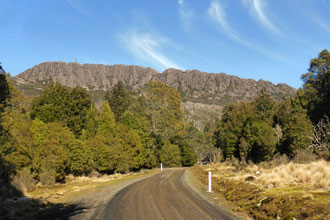
Mount Barrow is one of three large mountains east of Launceston, which can be seen from all over the city. (The others are Mount Arthur and Ben Lomond.)
Mount Barrow is an alpine plateau about 4 kilometres long, with two main summits: Mount Barrow itself, and South Barrow.
I’ve recently climbed Mount Barrow, and explored its alpine plateau.
Climbing Mount Arthur

Mount Arthur is one of several high mountains near Launceston, in northern Tasmania, which I've mentioned in a previous post. I've been thinking about climbing Mount Arthur for a long time, since my house-sit here two years ago; and this time I've got around to doing it.
You can see Mt Arthur from all around Launceston, so I knew from regular observation that it commonly has its head in the clouds.
Walking the South Esk track
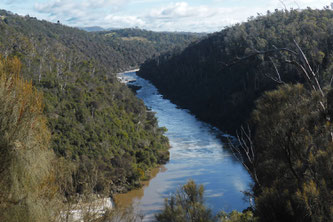
I've bushwalked on the Trevallyn Nature Recreation Area, near the Launceston CBD, many times while house-sitting here.
I thought that I’d pretty much covered all of it; however, I've realised recently that there is one bit of track there I may have never walked on. That track is the South Esk track, which runs along Cataract Gorge, above the South Esk River.
A pastoral walk in northern Tasmania
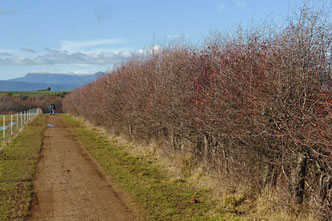
18th-century Britain’s answer to America’s slave trade was convict transportation, and Tasmania has a substantial convict history – convict labour built much of the early infrastructure here.
During Australia's convict period the colonial governments allocated convicts as free labour to landholders, allowing them to develop their estates to become substantial and impressive.
Launceston’s beautiful churches
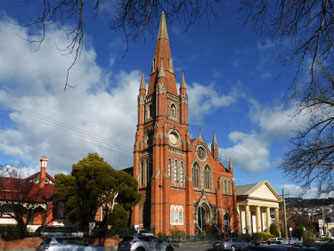
In my previous post, I introduced some of Launceston’s historic buildings, including a few of its commercial historic buildings.
Launceston also has a large selection of another sort of historic commercial building: churches. So much human skill, design, effort, and community wealth went into old churches that they are nearly always beautiful complex, and highly decorated buildings.
Return to Launceston
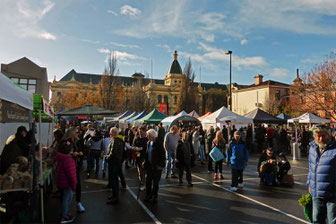
I am back in Launceston, Tasmania, again for another house-sit, a long one this time – about two-and-a-half months.
Launceston is the ‘capital’ of northern of Tasmania. It's a medium-size town with a long European history, set in a beautiful rural and natural setting. Launceston has most of the facilities of a city, plus the countryside and natural world within walking distance of the CBD.
Injidup Natural Spa
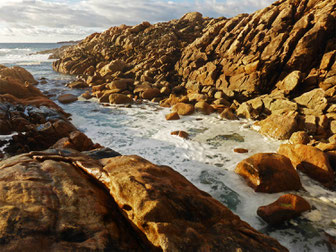
We’ve just visited Injidup Natural Spa, which is a naturally occurring spa pool of foaming and bubbling water set in a chasm in a rocky headland, in south-west Western Australia. As Indian Ocean waves pour water into the pool it foams and bubbles, creating a spa effect.
It’s winter now, so there was no one in the spa pool, but I can imagine how inviting this bubbling pool would be on a hot summer’s day!
A walk to Bob’s Hollow
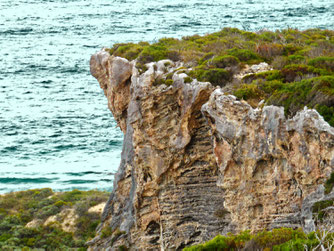
Our house sit is near the southern end of the Cape to Cape Track, a well know walking path which runs for 135 kilometres between the lighthouse on Cape Naturaliste and the lighthouse on Cape Leeuwin, in south-west Western Australia. Many people walk this track, usually over about seven days. We aren’t planning on doing this, but there is access all along the track, and we have sampled it at many places along its length while we’ve been staying here.
Augusta’s swimmers’ beach
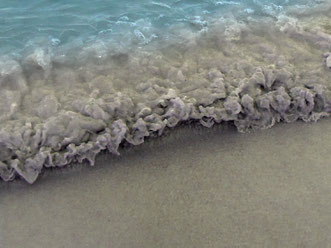
I went for a swim at Augusta’s most popular swimming beach this afternoon, at Davies Road in Flinders Bay.
Like all the coastline around here in the south-west of Western Australia, it’s a very beautiful spot. The weather here seems to be endlessly perfect, too, with mostly warm windless days and clear blue skies while we’ve been here, as it was today – perfect for swimming and admiring the scenery!
Seeking big trees in S-W WA

South-west Western Australia has a long association with the timber industry. Before the European invasion this corner of Australia was covered in a huge ancient forest of Karri, Marri, and Jarrah trees. Timber was being cut here 130 years ago and exported all over the world. As is usual with the timber industry, the cutting was rapacious and pretty much all of it was cut down.
We’ve done a walk through Boranup Karri Forest near here, but it’s only re-growth forest (although, at 130 years old, the trees have made it to a good size); so we decided to head out to find some real old-growth forest.
Margaret River vineyards

Here in Augusta, we are on the edge of the Margaret River Wine growing area, and we see vineyards whenever we travel around the region.
I’m not big on doing the winery crawl, but I don’t mind doing the occasional tasting, as I did when house-sitting in the Barossa Valley eighteen months ago. And it's always entertaining to watch and listen to the verbal convolutions as dozens of irrelevant adjectives get manipulated into the service of describing wine. For example: I tried a ‘muscular’ wine the other day!
St Ayles skiffs at Augusta
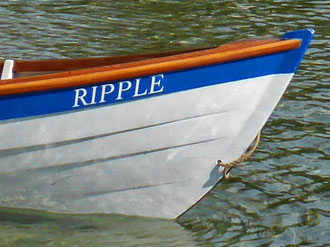
Augusta, where I’m currently house-sitting, is on the estuary of the Blackwood River; it’s a huge and very beautiful body of water, and I haven’t had an opportunity to get out on it until today.
The Royal Freshwater Bay Yacht Club (from the Swan River, between Perth and Fremantle) brought two St Ayles skiffs, ‘Ripple’ and ‘Dotsie’ down here today to promote these boats, and to see if they could kick-start a local interest in them.
Cowaramup Bay
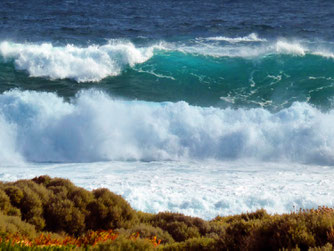
Here in south-west Western Australia the coastline is always beautiful – it seems that wherever you find your way to the coast it's stunning and unspoiled.
This area is the Margaret River Region; it’s well known for a few things and one of them is excellent surfing. (Some of the other things are great wine and great white sharks.)
We dropped into Cowaramup bay for a look, and found it to be yet another beautiful place, and a surfing hot-spot with nice waves pumping.
Jewel Cave
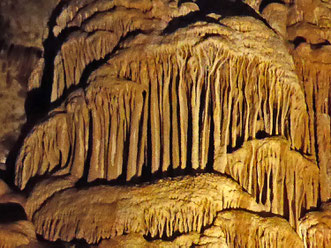
I'm house-sitting in Augusta, in the Margaret River Region, in the south-west of Western Australia.
The region is defined by Cape Leeuwin in the south, and Cape Naturaliste in the north. There’s lots of limestone here, with a huge limestone ridge running virtually from one cape the other. As I’ve noted in a previous post, limestone creates interesting landscape features. The limestone dissolves into the water that permeates through it, leaving cavities under the ground. With enough time those cavities enlarge to become caves, and this whole area is riddled with them – more than one hundred are known.
Walking at Cape Leeuwin

Our house-sit in Augusta is only a few kilometres from Cape Leeuwin, which is the south-west-most point of Australia. It's a wild place at the junction of the Indian and Southern Oceans.
As an east-coast Australian, I grew up with the dominating presence of the Pacific Ocean; I haven’t seen much of the Indian Ocean, so it’s exciting to be visiting its shoreline!
Boranup Gallery’s timber furniture
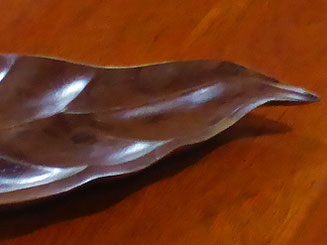
I'm house-sitting in Augusta in south-west Western Australia. This time we are looking after couple of dogs, a cat, and a couple of galahs (large Australian parrots).
We were in this area twenty years ago, so we're following up on some of the attractions that we saw back then. One of those attractions is Boranup Gallery, which exhibits handmade timber furniture mostly made from local Western Australian timbers jarrah, karri, and marri.
Flying, and observing humanity
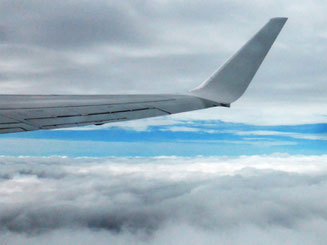
I'm flying from Canberra to Brisbane today for a house-sit. As always, I've got a window seat, and, as always, when I look out of the window, I'm struck by the humanisation of the land: this trip is 950 kilometres, and it's mostly flying over farmland.
The huge area of Australia is mostly modified (some of it heavily) for human use, except for some of its deserts – it’s a vast machine that serves humanity.
,
Our House-sit in Mountain River

We are house-sitting in Mountain River, in Southern Tasmania. Our temporary pet this time is Kaya, the Alaskan malamute.
Mountain River district is in the Huon Valley, and it's named for Mountain River, which flows from the alpine plateau of Wellington Park. The main peak of Wellington Park is Kunanyi/Mt Wellington, which forms the dramatic backdrop of Hobart.
It’s a very beautiful area – a rural and wild valley surrounded by beautiful high mountains.
A visit to Ben Lomond
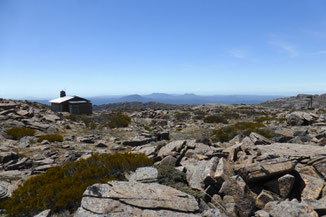
We visited Ben Lomond today, just outside of Launceston. Ben Lomond is one of three large mountain that we see in the view from our house-sit at Trevallyn.
The weather was perfect, and the scenery was dramatic and beautiful with views of the many mountains to the east, the Central Highlands to the west, and Bass Strait to the north.
Our Trevallyn house-sit and its views
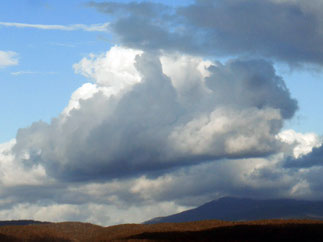
We have moved to northern Tasmania for our current house-sit – we are in Trevallyn, a suburb of Launceston. Trevallyn is on a high ridge to the west of the city, and we are on top of that ridge. Launceston city itself is just a few metres above sea level, but up on the ridge we are 130 metres up, so we get great views of the city and the mountains to the east. It’s a great location; and we are only thirty-five-minutes’ walk from the city centre.
More of Launceston’s Macaque monkeys
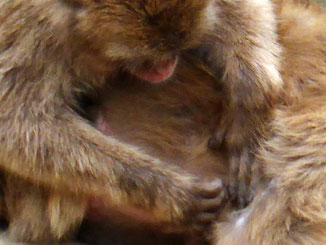
We went into the Launceston CBD today, and we parked near City Park. City Park has a macaque monkey display, which I’ve described in a previous blog post. As always when we are going by, we stopped in on them to see what they were up to, and to catch another revelatory glimpse of their evolutionary connection with humans.
It was a quiet time of day for them, and, in a sense, they weren’t really up to much; but, as always, they do everything, including nothing, in an entertaining way.
House-sitting and kayaking at Beaupre Point

We’ve been house sitting at Beaupre Point, at the end of the Huon Valley, south of Hobart. Beaupre Point is at the confluence of the Huon River and Port Cygnet, so there is plenty of water around. As with our house-sits in Cazorla, Spain, and Marcoola, Queensland, this property is an accommodation business The property has kayaks for the guests to use, and the owners are letting me use one while I’m here, so I’ve taken one out to check out the local waterways.
Climbing Mount Cygnet
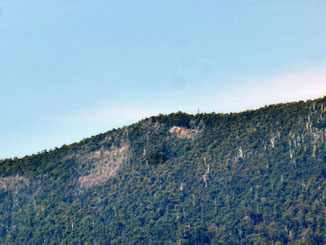
I'm house-sitting in Cygnet, Tasmania, again. This time I'm on the hills looking across Port Cygnet and the inlet. The dominant feature of my view is Mount Cygnet, the summit of a long mountain ridge. You can see Mount Cygnet from all around this area, so, by implication, the view from the top should be extensive. I’ve been eying Mount Cygnet off as a bushwalking destination for a while during my various house-sits here in Cygnet, and I’ve recently worked out how to do it!
Bushwalking in the snow!
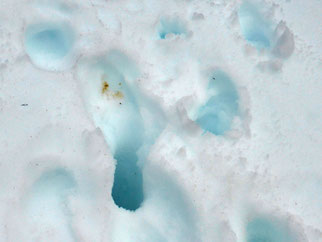
I grew up in sub-tropical south-east Queensland, where there's not a lot of snow, so snow is something of a miracle to me – it's like it's out of a fairy tale. I've been hoping to get to do some bushwalking in snow before this winter is over. I have returned to Tasmania in the early spring, and there's still quite a bit of snow around at high altitudes, so this is my big chance to fulfil that dream.
Question Time at Parliament House
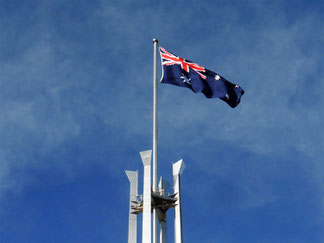
Canberra is Australia’s capital city, so while I’m housesitting here I have the opportunity to visit Parliament House to watch our parliament in action – and that’s not always a pretty sight. But before I go into that, I'll give some context: a quick reminder about what our parliament is. Australians should already know about this – although I have my own slant on it – but they probably don’t; and non-Australian readers will need this tiny bit of background before I talk about my visit to our federal parliament.
Walking to Mt Ainslie and Mt Majura
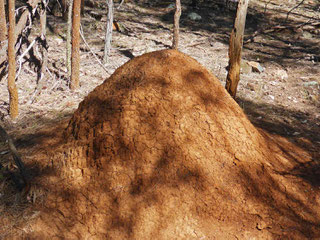
Canberra is a totally planned city designed by the landscape architect Walter Burley Griffin. Before the city was built the area where it now stands was mostly two large sheep stations, Yarralumla and Duntroon. This blank canvas enabled Canberra to be designed with areas of open country, which results in a spread-out city with integrated areas of bushland. This is ideal for urban bushwalking, and means that I can go on a nice bushwalk straight from my front door!
A walk on Coila Beach

My house-sit in Canberra includes the occasional house-sit at the house-owner family’s beach house at Tuross Head, on the adjacent coastline. Tuross Head is a small coastal village on the south coast of New South Wales on the beautiful east coast of Australia, about 270 kilometres south of Sydney. Because it’s on the closest adjacent coast to Canberra, it's a popular place for Canberrans’ beach houses.
Vincent Van Gogh at the NGV

I’m currently doing a short house sit in the suburbs of Melbourne on the way between Tasmania and Canberra.
I’m lucky to have crossed paths with the exhibition Van Gogh and the Seasons, the largest collection of Van Gogh artworks to ever travel to Australia, at the National Gallery of Victoria. It’s a great opportunity to see some of Vincent Van Gogh’s works with my own eyes.
Climbing Platform Peak, Tasmania
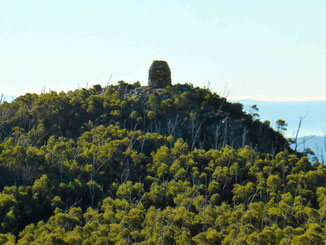
My current house sit in Bridgewater, southern Tasmania, has put me in an area with some great bushwalking opportunities. One of these opportunities is Platform Peak, just outside of the nearby town of New Norfolk.
The walk to platform Peak is through forestry reserve land, which means that it is public land with a low level of environmental protection (it could be logged one day) and minimal walking facilities, such as maintained tracks and sign posting. This means that more care in planning and execution is required, compared with walking in a national park.
The Tasman Bridge Disaster
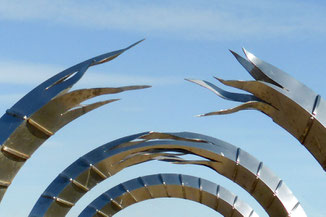
The Tasman Bridge is a graceful bridge that spans the Derwent River, joining Hobart city to the suburbs on the eastern side of the river, to the airport, and to the south-east of Tasmania in general.
The Tasman Bridge was built in 1964 so it’s over fifty years old, but it’s such a modern-looking bridge that it’s hard to believe that it’s as old as it is; certainly, it’s a surprise to see old photos of it covered in 1960s Australian cars, and it’s a surprise to see its original construction cost listed in £s (Pounds), as it was constructed before Australian Dollars came into existence.
But, regardless of the Tasman Bridge’s grace and style, it has a chequered history: it was involved in a serious maritime disaster. If you are in Hobart for long enough you are going to have to hear about, and consider, the story of the Tasman Bridge Disaster.
Climbing the Tasman Bridge
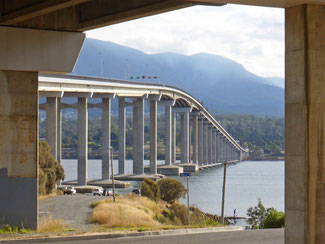
The Tasman Bridge is a long, graceful, and picturesque bridge that spans the Derwent River, joining Hobart to the suburbs on the eastern side of the river.
I’ve driven over the Tasman Bridge many times, as nearly everyone in Hobart and surrounds does, but I’ve never walked over it on its footpaths. I decided to walk over it as it’s quite high and promised the possibility of an interesting experience with good views.
Cornelian Bay boat sheds
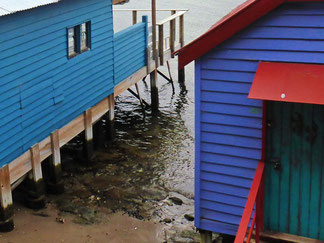
Cornelian Bay is on the Derwent River, just upstream from Hobart and the Tasman Bridge.
There’s a walking path to Cornelian Bay along the foreshore of the river, which runs from the Royal Tasmanian Botanical Gardens. It’s quite a short and easy walk of about five kilometres return.
For the most part the walk is enjoyable but unexceptional – the views are quite urban and even industrial, but nevertheless pleasant and worth seeing. But this little walk does have its special point of interest: a collection of cute boatsheds that step out into the water!
Walking the Alum Cliffs track

One of my favourite types of bushwalking is walking along sea cliffs – I just love peering out of the bush and looking down on that beautiful blue water that disappears into the distance, and seeing the colour of the raw rock of the cliffs against the sea! Southern Tasmania abounds with sea cliffs – some of the highest in the southern hemisphere are down here.
I’ve just walked along the Alum Cliffs, on the Derwent River just south of Hobart, Tasmania’s capital city, and they meet my expectations!
A surprise find: HMAS Curlew
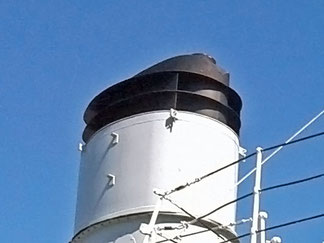
I’ve been kayaking all around Snug while staying in a caravan and cabin park on the foreshore during a short break from house-sitting. The waterways around Snug range in use from relatively wild areas, through agricultural, aquacultural, residential and commercial areas, to industrial areas; so there is a wide range of things to see when out on the water.
Just north of Snug, near Margate, at a marina development, I came across a small and old ex-naval ship tied up at a jetty. At about fifty metres long, while this is a small ship, it is easily the biggest vessel around here, and it was quite a surprise to find it.
Paddling to the Coningham NRA
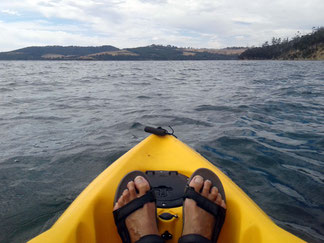
I had a marvellous few days staying at Snug Beach recently, and I was lucky enough to be able to borrow a kayak while I was there. Kayaking is one of my favourite things to do, and my favourite and most adventurous kayak trip while staying at Snug was out to the end of Coningham peninsula, along the Coningham Nature Recreation Area (NRA) – it was also particularly memorable for another reason that I’ll come to. The Coningham Nature Recreation Area is wild and very beautiful – it’s all eroding sandstone cliffs, sandy bays, and bush along the sea edge.
Kayaking at Snug Beach
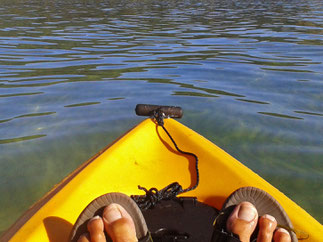
One of my favourite things to do in life is kayaking. I owned a kayak for over twenty years, but when I started this house-sitting tour of Australia I sold it along with our house and car. For many years I had that kayak but little time to use it – now I have the time, and I certainly have the place here in Tasmania, which is a kayaker’s paradise, but I have no kayak! This is why I was excited to find that I was able to borrow a kayak while staying at Snug Beach. Using it was the highlight of my stay, and I thoroughly enjoyed it as I explored the local waterways.
A break at Snug Beach
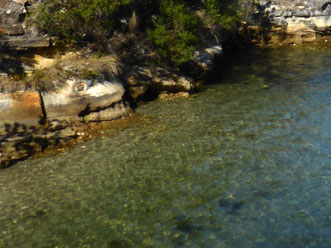
We had a break in our house sitting schedule so we took some time off from looking after pets and cleaning up at the end of a house-sit assignment to stay for a few days in a cabin in Snug Beach Cabin and Caravan Park, a caravan (trailer) park at Snug, a short drive south of Hobart. We had a marvellous stay in a very beautiful and interesting area.
And how cute is the name “Snug”!? It almost beats Flowerpot, a few tens of kilometres further south!
The Barossa Farmers Market
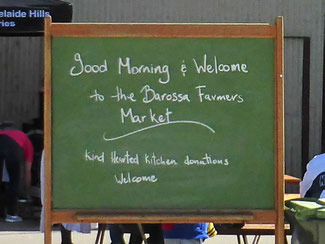
We love buying fresh produce and hand-made goods, especially food items, at farmer’s markets – we seek them out and visit them wherever we go, so we went to the Barossa Farmers Market near Angaston, in the Barossa Valley, Australia, at our first opportunity.
We weren’t disappointed – the market is the best I’ve seen since visiting the fabulous local markets in Tasmania.
Free-range pasture eggs

We took a wrong turn at Yarra Junction in Victoria while we were trying to pick up the Lilydale to Warburton (Warbie) Rail Trail (a disused railway line that is now a multi-use walking track) for an afternoon walk.
As we drove around the country lanes looking for our destination we went past a free-range chook farm with hundreds of plump brown chooks running around the grassy paddocks and on the quiet, back-street road verges.
Parking in Melbourne, Australia
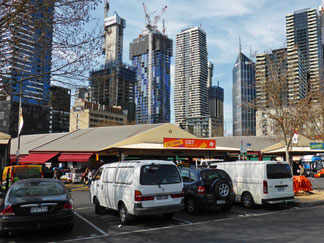
I recently had cause to drive to Melbourne’s Tullamarine Airport, for an early drop-off. It’s a one-and-half-hour trip, so I was travelling through the suburbs at 6 am. Even then, the four lanes of the Monash Freeway are close-packed with cars travelling at the speed limit, so the freeway is operating at maximum capacity, maybe hundreds of cars per minute. This will go on for a couple of hours yet, and this is only one of several big feeder roads into the city. It’s hard to believe that all of these vehicles pouring in are going to find a park for the day, and even harder to believe that I’ll find one too, by the time that I get there!
Macaques of Launceston
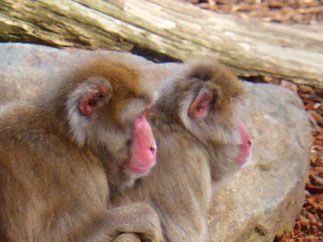
I first visited Launceston nearly 25 years ago, and two things stand out in my memories from that trip: Cataract Gorge and the macaque monkeys in City Park; both of them are still there and they are both still outstanding.
Visiting the monkeys is free, and they are so interesting that we’ve taken to dropping in on them for a look every time we are in that part of the city.
Launceston's Cataract Gorge
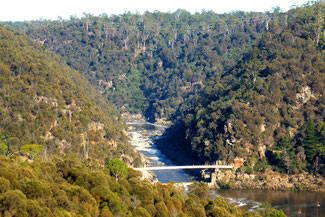
Launceston has an extensive and beautiful natural feature right on the edge of the CBD: Cataract Gorge.
Cataract Gorge was formed when the South Esk River cut through a fault line in a ridge of volcanic rock. It’s a remarkably beautiful and seemingly wild place, especially considering its location right in the middle of a city.
Planning a great Aussie road trip
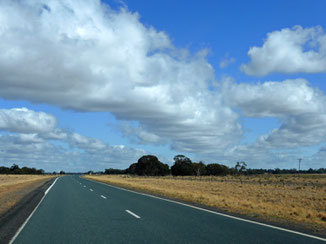
In 2015 I spent eight months travelling around the British Isles, the Iberian peninsular, Iceland, and North America, some of which I have blogged about here (with more to come.) Now we've sold up and become completely nomadic, and we are on our way to do some extensive travelling around our home country, Australia.
An evening at Coolum Beach, Australia
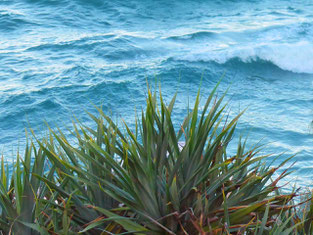
When I'm traveling overseas I'm not especially engrossed in looking for great beaches; that's because back in Australia we have some of the best beaches in the world. One of my favourites is at Coolum Beach on the Sunshine Coast, Queensland. I visited Coolum Beach recently in the early evening of a late-summer day; at this time of day there is usually a beautiful sea breeze blowing in, a lovely soft evening light, and a relaxed atmosphere.
Our house-sit in Marcoola, Australia
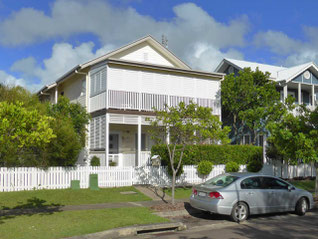
This house-sit is just one night in a house in Marcoola on the Sunshine Coast in Queensland, Australia. Like our other house-sits, this one was organised through Trusted House Sitters. And, like our previous house-sit in Cazorla, Spain, this one is an accommodation business called Glanymor Cottage, with rooms that are rented out through Airbnb. There are no guests this weekend, and the owners are going away to nearby Brisbane.
Would you like to add something, or ask a question? Add a comment below (you can leave the 'Website' field blank):
